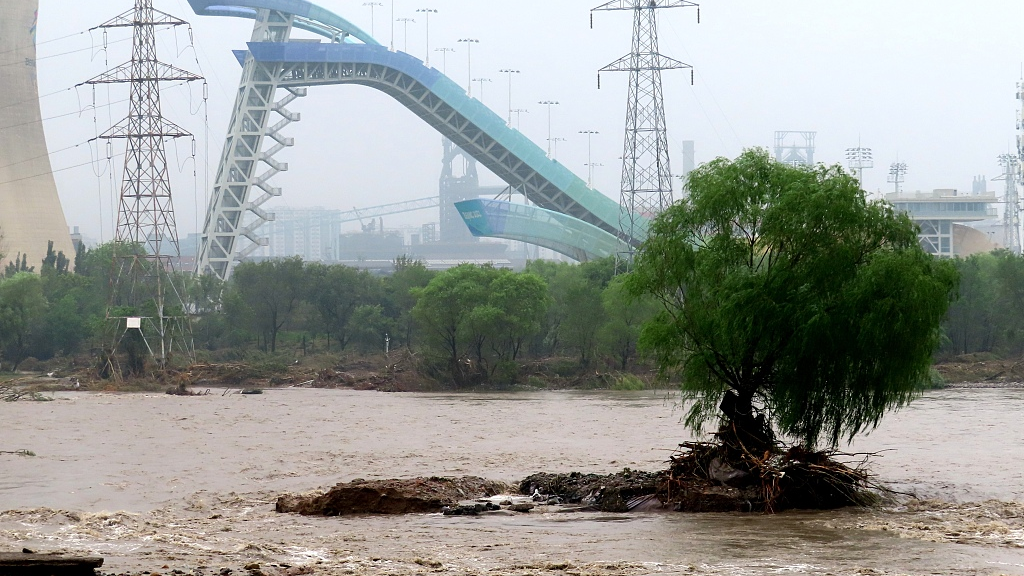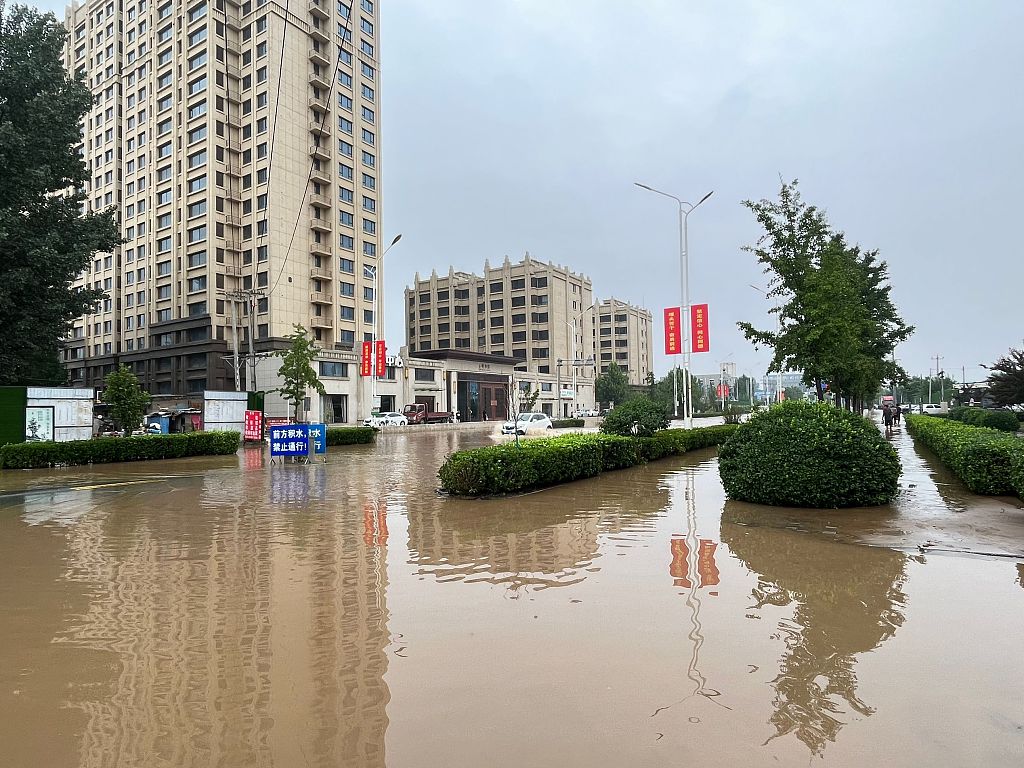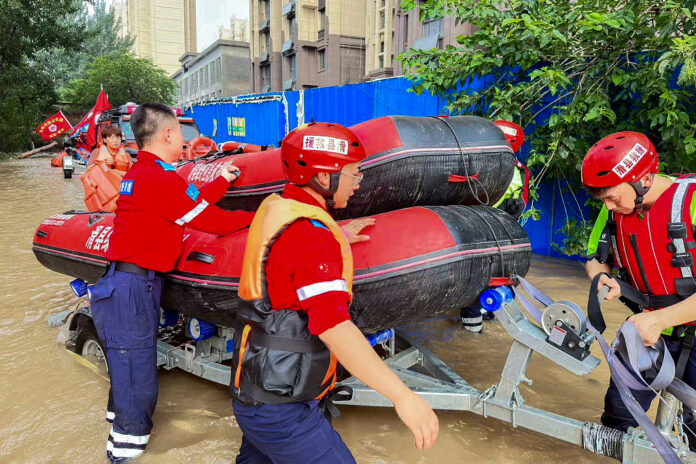BEIJING: Due to the impact of Typhoon Doksuri, the fifth typhoon of this year, the Beijing-Tianjin-Hebei region has experienced continuous heavy rainfalls.
Floods caused by consecutive days of torrential rains have occurred in areas including Zhuozhou City in Hebei Province. Statistics show that rainstorms had impacted a total of 540,703 people in 87 counties and districts in Hebei as of noon on Tuesday. The economic losses brought by the disaster are still being investigated.

The current in the Winter Olympic Park section of the Yongding River washes away some landscape facilities and trails on both sides of the river, Beijing, China, August 2, 2023. /CFP
After the strike of typhoon and subsequent floods, the Chinese central government and local authorities put a lot of effort into disaster relief. By now, China has allocated 100 million yuan (about $13.9 million) to support emergency recovery and reconstruction, and 30 million yuan of emergency road repair subsidy to Beijing and Hebei Province following typhoon-triggered rainstorms.The Emergency Management Department and Ministry of Agriculture and Rural Affairs are also regulating flood storage areas and agricultural areas for flood and epidemic prevention.
Currently, most affected areas in Beijing have lifted the flood alerts, and scenic spots in these areas are going to be gradually re-opened to the public, according to the Beijing Municipal Bureau of Culture and Tourism. As for Hebei Province, especially Gaobeidian City and Zhuozhou City which have many villages flooded and villagers trapped, local authorities set up 28 emergency rescue teams, together with teams from provinces including Shandong, Henan, Jiangsu and Shanxi, helping to transfer trapped people as well as disaster relief supplies. It is reported that Zhuozhou City still lacks drinking water. Some rural areas are also experiencing electricity outages.

Flooded Zhuozhou City after heavy rain. /CFP
Meanwhile, the State Flood Control and Drought Relief Headquarters has activated a level-IV emergency response against Typhoon Khanun and sent a work team to east China’s Zhejiang Province to assist in the local combat against the sixth typhoon of the year.
China’s ongoing efforts against floods and typhoons remain complicated and severe, according to the meeting jointly held on Wednesday by the office of the headquarters and the Ministry of Emergency Management.
The floods in the Haihe River Basin are progressing toward the middle and lower reaches, with considerable pressure on waterways and dams, according to the meeting.
The ongoing battles would be exacerbated by a new round of rainfall, expected to hit Jilin and Heilongjiang in the northeast and the ever-increasingly complex and uncertain Khanun tracks.
Given this adverse situation, the headquarters and the ministry urged utmost efforts to brace for heavy rainfall in the northeast, closely monitor the development of Typhoon Khanun and get well-prepared.























